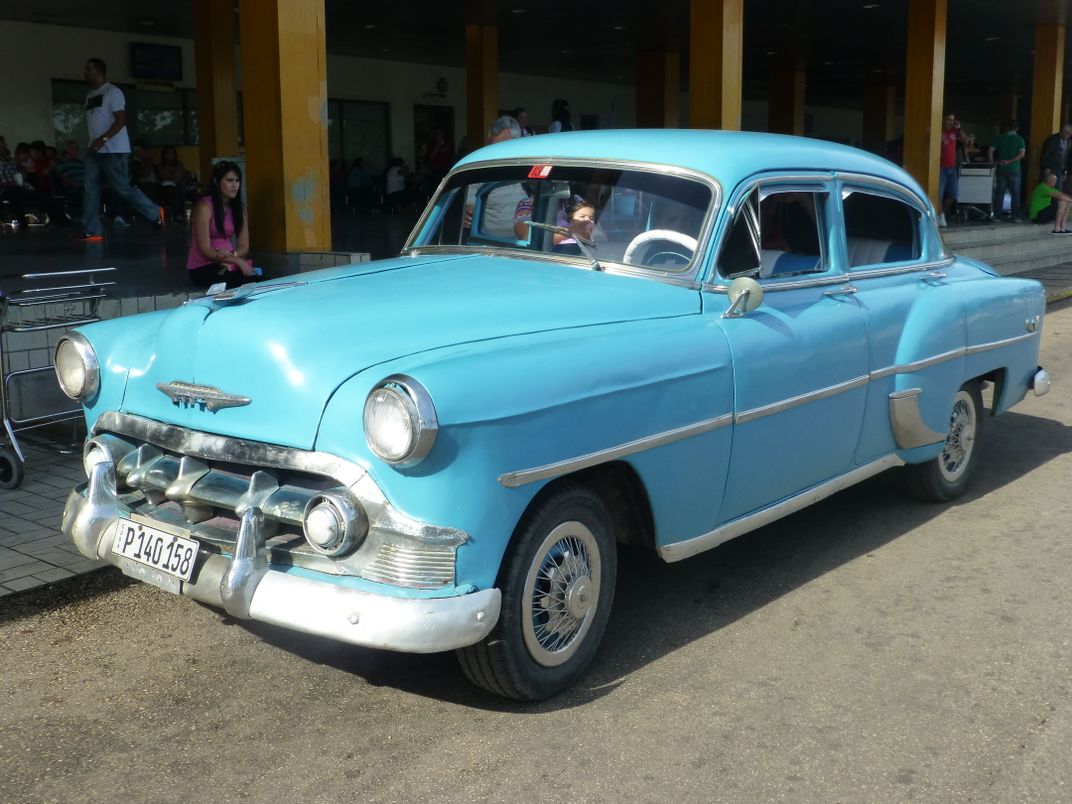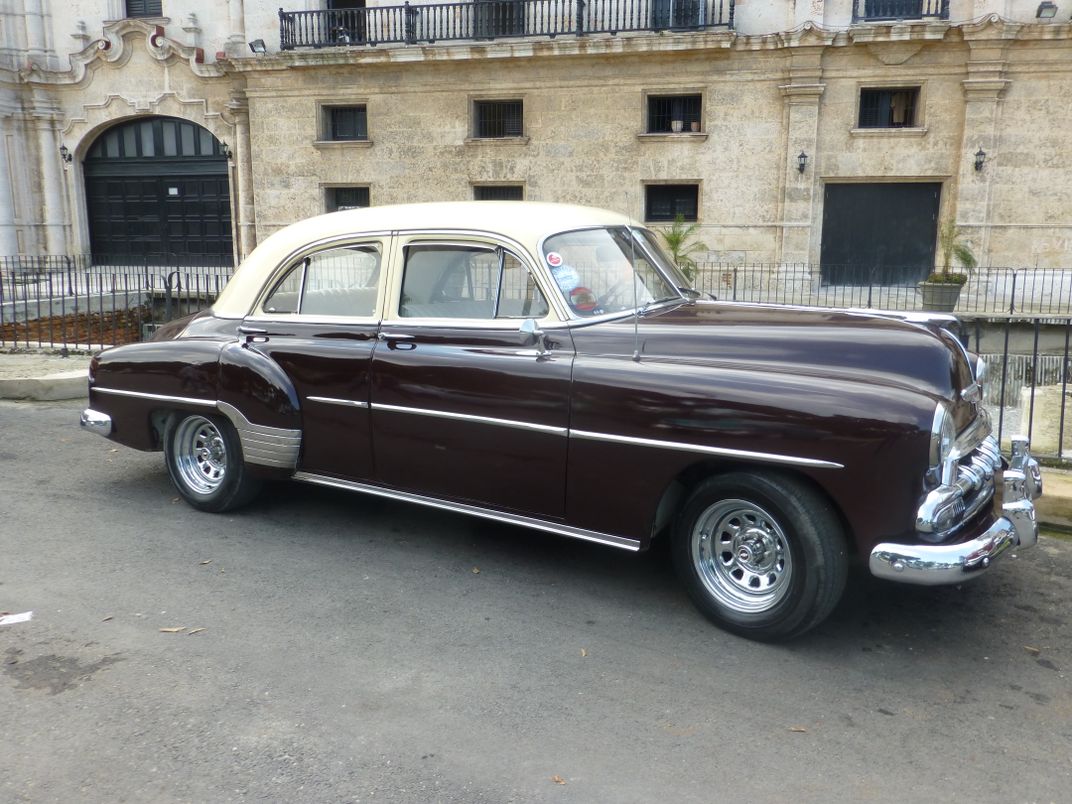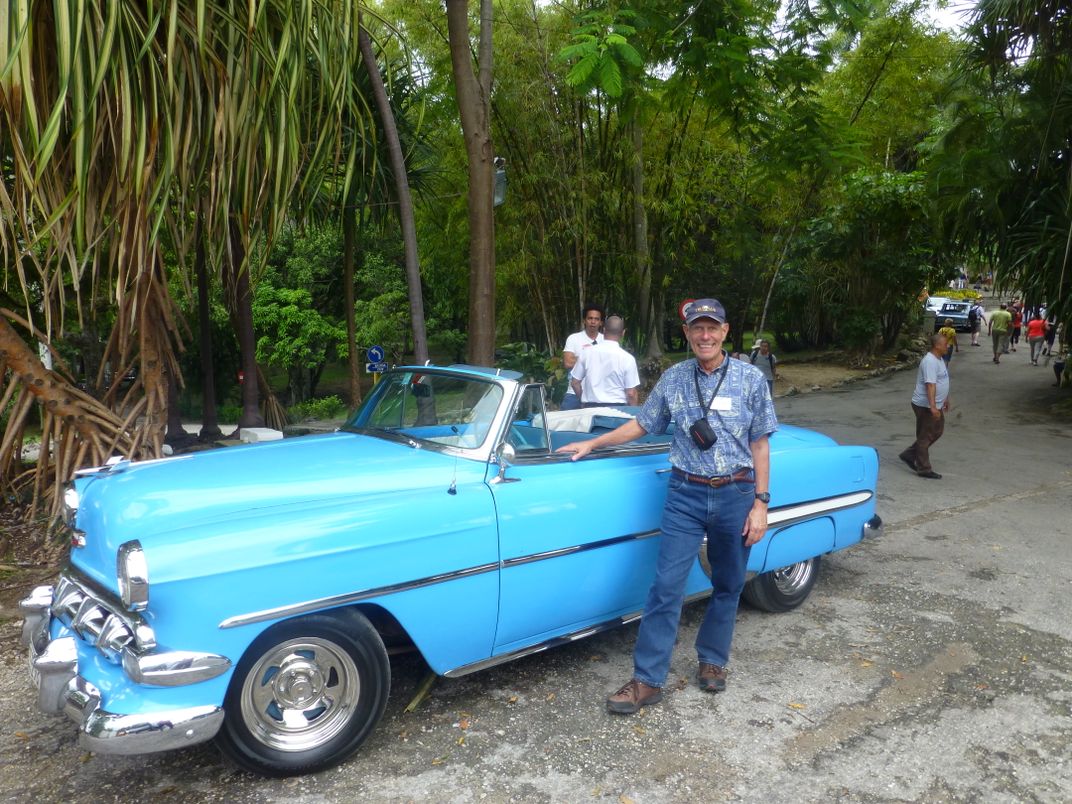
Americans in Cuba
John Tindale
I’m talking cars, big, loud, colorful V8 gas-guzzlers imported before Castro’s revolution in 1959. They cruise the streets of Havana with macho bravura, many of them restored to mint condition, even if a few of the parts aren’t exactly OEM.

Baby-boomers will recognize some of these beauties from their youth, a long-ago era, it seems, before GM, Ford and Chrysler had their wings clipped by carbon emissions, fuel efficiency standards and OPEC. I assume the cars also remind Cubans of better times before the U.S. embargo.

Many of the cars are equipped with fancy blaring horns played by the drivers on four valves that mimic a trumpet. As the cars charge like Hemingway bulls through the city, they communicate back and forth, sometimes arguing turning heads the whole time. Some can even produce a wolf whistle at the appropriate moment. (I was lucky enough to ride in the front seat of a candy-apple 1946 Ford convertible with four-note horn, which the driver invited me to play. Or was it a dream?)
Ironically, the old American cars represent the new Cuba, as their owners can legally drive them for profit as taxis. Cubans can also now buy and sell the cars privately.
With American access to Cuba expanding almost daily, the luckiest travelers may be those who Discover Cuba before the inevitable wave of new cars inundates the city like the waves that crash continually over Havana’s ocean-front Malecón.


/https://tf-cmsv2-journeys-media.s3.amazonaws.com/journeys/catalog/cover_image/Mar_24_SJ_Cover.jpg)
 Be the First to Know
Be the First to Know